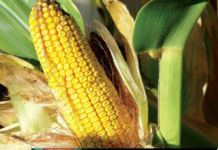“A garden requires patient labor and attention. Plants do not grow merely to satisfy ambitions or to fulfill good intentions. They thrive because someone expended effort on them.” Liberty Hyde Bailey
Gardeners tend to be impatient with their landscapes. They want growth as quickly as possible – with all the additional perks of color, focus, privacy – and preferably this year, this season, this month, this week, now. But if you’ve gardened long enough, you’ve probably learned that the plants that take the most patience tend to be, in the long run, the most long-lived.
There are advantages to slow, or at least unseen, growth. Often it means that plants are putting their energy underground in the form of root growth. Once their roots are established, they will get about the business of growing upwards, but first they concentrate on a solid base.
Most perennials – plants that live for two or more years – are slow starters. A few perennials, like chrysanthemums, do their best when they’re transplanted every couple of years, but many are happy to remain in place for 10 years or more. Long-lived perennials include peony, bleeding heart, sedum, Siberian iris, gas plant, Lenten rose, Epimedium, goat’s beard, Corydalis and ornamental grasses.
For the initial planting, it’s important to know the plant’s mature size and space it accordingly. Placing small, fragile plants a foot or more apart can look silly the first few years but eventually they’ll need the space, and deep-rooted plants don’t adapt to moving and transplanting as well as their shallow-rooted companions. Planting annuals among them the first few years can help ease the transition and keep out weeds while they get established.
Prairie plants are by nature deep-rooted to withstand drought and competition, and many of them take a few years to reach mature size. Keeping weeds out the first few years is important since most weeds are extremely fast-growing annuals designed to complete their life cycle in the first season. Annual weeds can often grow to 4 feet or more in one year, shading prairie seedlings and competing for water and nutrients.
We’re all influenced by appearance and that’s certainly true in the nursery, where many prairie plants are overlooked because of how fragile they appear. They simply aren’t happy in small nursery pots where their roots can’t spread down and out. The stems of plants like milkweed look like wispy hairs early on – they seem far too fragile-looking to place with grasses or other perennials. But give them some time, care and watering and they’ll outlive many of their neighbors. Even woody-stemmed plants like Baptisia and leadplant look like they couldn’t survive in tough soils. But that’s precisely what they are accustomed to, and what their roots are waiting for.
So when you’re planning your next garden bed, give some thought to future years and do a little research on how long the plants you’re wanting to grow are likely to live. If you’re thinking about the long run, you may have to be a little patient in the beginning… but it’ll pay off




